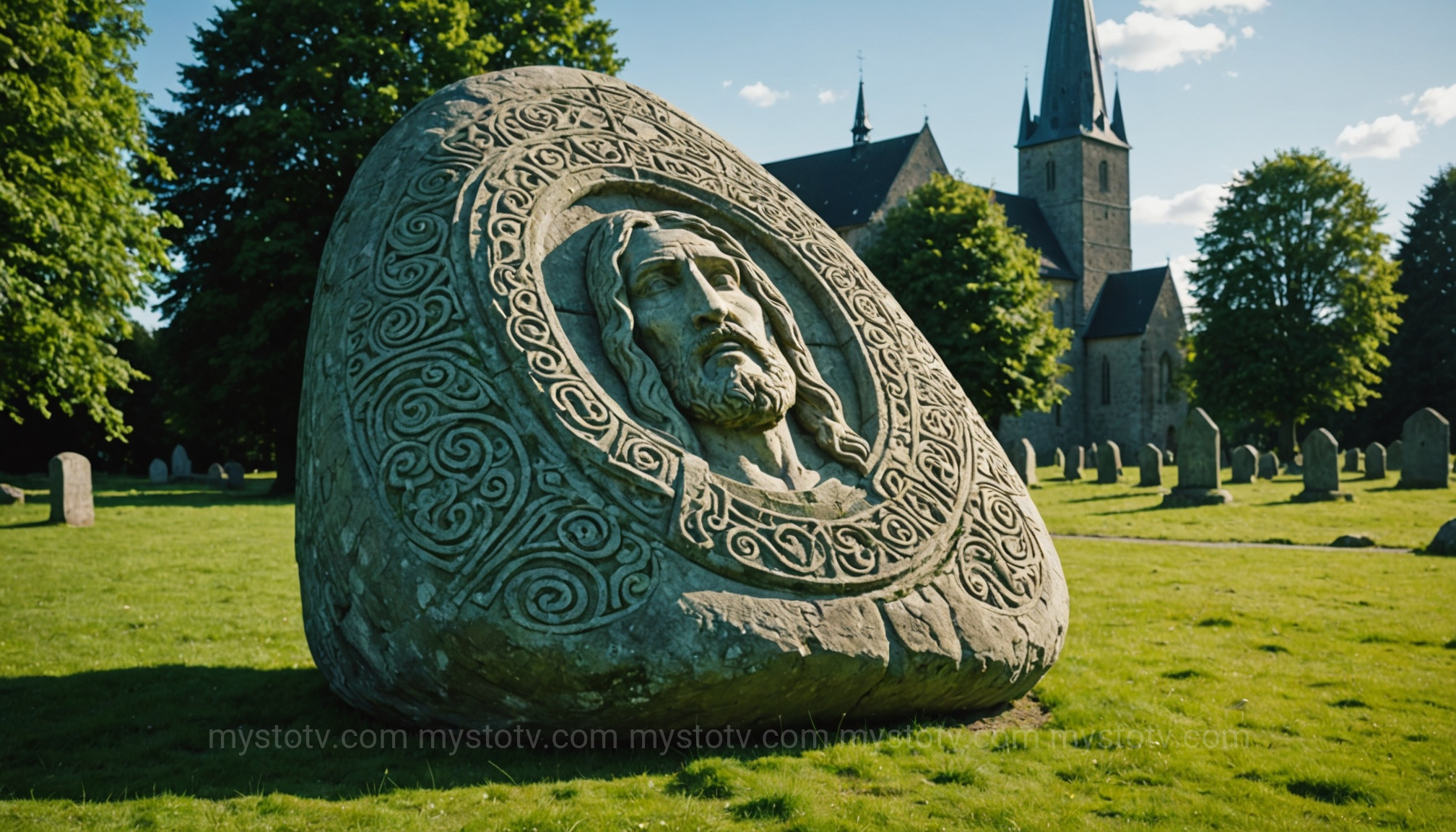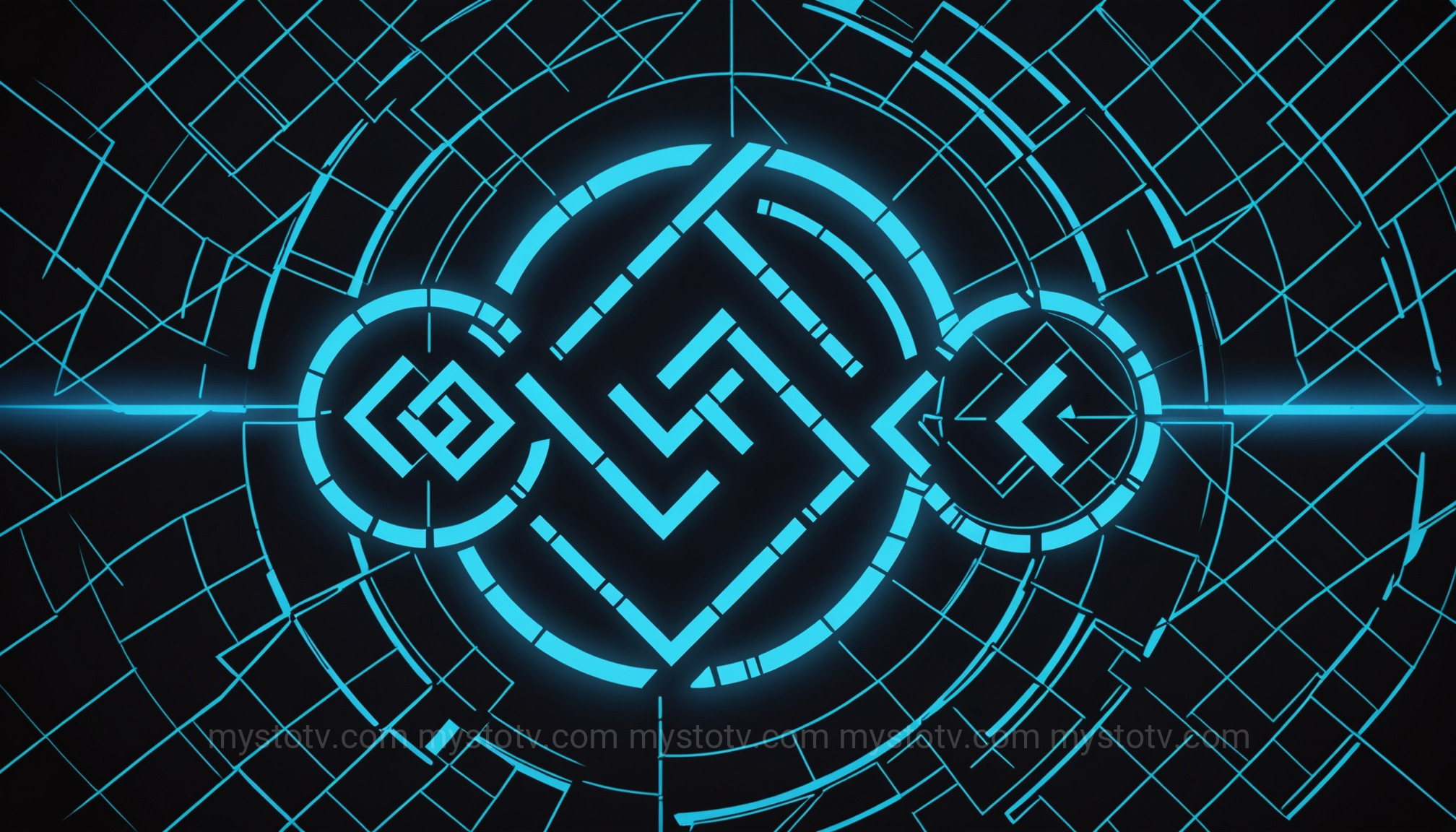The other day, I was pairing a new set of headphones to my laptop, and that familiar blue, runic symbol popped up in the corner of my screen. It's an icon I've seen thousands of times, a simple part of daily life I never questioned. But on this occasion, a random thought struck me: why that symbol? And why the strange name? A quick search sent me down a fascinating rabbit hole, not into the world of radio frequencies and protocols, but into the fog-shrouded history of 10th-century Scandinavia. I discovered that the technology connecting my devices is named after a real person: a formidable Viking king named Harald Bluetooth. This discovery transformed a mundane tech icon into a symbol of a forgotten history, connecting the digital age directly to the man who first united a nation. The story of the real Harald Bluetooth is far more epic than any tech manual.
Contents
- 1 Who Was the Real Harald Bluetooth?
- 2 The Unification of Denmark and Norway: The Legacy of Harald Bluetooth
- 3 The Jelling Stones: The "Birth Certificate" of Denmark Crafted by Harald Bluetooth
- 4 The Christianization of Denmark Under Harald Bluetooth
- 5 From Viking King to Tech Icon: How Harald Bluetooth Inspired a Global Standard
- 6 Frequently Asked Questions about Harald Bluetooth
- 7 References
- 8 Conclusion
Who Was the Real Harald Bluetooth?

Before becoming a household name in technology, Harald "Bluetooth" Gormsson (Old Norse: Haraldr Blátǫnn Gormsson) was a king who fundamentally reshaped the Scandinavian world. Born around 920 AD, he was the son of Gorm the Old, the first historically recognized king of Denmark, and his wife, Thyra. Harald inherited a kingdom that was more a loose collection of fiercely independent chiefdoms than a unified state. His era was one of profound change, with the old Norse pagan traditions clashing against the rising influence of Christian Europe to the south.
The Origins and Nickname of Harald Bluetooth
The most enduring question about Harald Bluetooth is the origin of his peculiar epithet. The most widely accepted theory, first recorded by the chronicler Helmold of Bosau in the 12th century, is that Harald had a conspicuous dead tooth, which was dark blue or black in appearance, earning him the name "Blátǫnn" or Bluetooth. While this is a vivid and memorable image, other, more modern theories exist. Some scholars suggest a possible mistranslation, arguing that "Blátǫnn" could have originally meant "dark-skinned chieftain," as "tann" could mean chieftain and "blá" could mean dark. However, the dead tooth theory remains the most popular and culturally resonant explanation for the name of Harald Bluetooth.
The Political Landscape Harald Bluetooth Inherited
When Harald Gormsson ascended to the throne around 958 AD, he faced immense challenges. Denmark was fragmented, vulnerable, and caught between powerful neighbors. To the north, Norwegian jarls vied for dominance, while to the south, the powerful Holy Roman Empire under Otto the Great saw the pagan Danes as both a threat and a target for conversion and conquest. To survive and thrive, Harald knew he couldn't simply rule as his father had. He needed a grander vision: a single, strong, and centralized Danish kingdom that could stand on its own. This ambition would define his reign and become his greatest legacy.
Analysis: The identity of Harald Bluetooth is intrinsically linked to the challenges of his time. His nickname, while possibly just a physical descriptor, humanizes him and makes him memorable. More importantly, the fractured political landscape he inherited was the crucible in which his ambitions were forged. He wasn't just a conqueror; he was a state-builder, responding to existential threats with a revolutionary plan for unification that was far ahead of its time for the Viking world.
The Unification of Denmark and Norway: The Legacy of Harald Bluetooth
Harald Bluetooth's most significant historical achievement was his unification of Denmark and, for a time, Norway. This was not a simple matter of winning a few battles; it was a complex project of military conquest, strategic diplomacy, and groundbreaking infrastructure development. He transformed a patchwork of territories into a cohesive realm with a defined national identity, a feat he famously commemorated on the Jelling Stones. This unification was the core mission that defined the historical Harald Bluetooth.
Fortifying a Kingdom: The Trelleborg Ring Fortresses
One of the most tangible pieces of evidence for Harald's centralizing power is the network of massive ring fortresses he constructed. Known as Trelleborgs, these forts were masterpieces of Viking Age engineering. Sites like Fyrkat, Aggersborg, and Trelleborg near Slagelse were built with perfect geometric precision, featuring circular ramparts, four gates aligned with the cardinal directions, and meticulously organized longhouses within. These were not mere defensive outposts; they were military barracks, administrative centers, and powerful symbols of the king's authority, projecting the power of Harald Bluetooth across the land. They required immense resources and a coordinated labor force that only a strong, unified ruler could command.
A Diplomat and a Warrior: How Harald Bluetooth Secured His Realm
Harald was as shrewd a diplomat as he was a commander. While he used his military might to subdue rival Danish jarls and to extend his influence over Norway following the death of its king, Haakon the Good, he also understood the power of alliances. He navigated the complex politics of the Holy Roman Empire, at times fighting against them and at other times using their internal conflicts to his advantage. His reign was a masterclass in balancing force with statecraft, a necessary combination to forge a single nation from a collection of warring tribes. This multifaceted approach was key to the success of Harald Bluetooth.
Analysis: The unification achieved by Harald Bluetooth was a paradigm shift for Scandinavia. The Trelleborg forts are not just archaeological sites; they are physical proof of a central government at work, capable of large-scale public projects. His blend of military action and diplomacy shows a political sophistication beyond the stereotypical Viking raider. He was creating the very concept of "Denmark," a stable and defensible entity that could engage with the rest of Europe on its own terms.
The Jelling Stones: The "Birth Certificate" of Denmark Crafted by Harald Bluetooth

In the small town of Jelling, Denmark, stand two monumental runestones that serve as the definitive statement of Harald's reign. The smaller stone was erected by his father, Gorm, in memory of his wife, Thyra. But it is the larger, more elaborate stone raised by Harald Bluetooth around 965 AD that has earned the title "Denmark's birth certificate."
Its three sides carry a powerful message. One side features the earliest depiction of Christ in Scandinavia, another a fantastic animal (the "great beast") fighting a serpent, and the third bears the runic inscription that immortalized his legacy. The inscription reads:
"King Haraldr ordered this monument made in memory of Gormr, his father, and in memory of Thyrvé, his mother; that Haraldr who won for himself all of Denmark and Norway and made the Danes Christian."
This stone is a bold declaration of power, faith, and dynastic succession. It publicly proclaims his three greatest achievements: honoring his parents, uniting the nation, and converting it to a new religion. It is the most important primary source we have for the life and work of Harald Bluetooth.
Analysis: The Jelling Stone is a masterstroke of political communication. In an era without mass media, Harald Bluetooth used a permanent, public monument to solidify his narrative. It’s propaganda in the most literal sense—propagating an idea of a unified, Christian Denmark with him as its divinely sanctioned ruler. It definitively marks the end of one era and the beginning of another, all credited to one man.
The Christianization of Denmark Under Harald Bluetooth
Harald's declaration on the Jelling Stone that he "made the Danes Christian" was not an exaggeration. His conversion and the subsequent establishment of Christianity as the state religion was a pivotal moment in Scandinavian history. This decision was driven by a complex mix of personal faith and razor-sharp political strategy, a move that would permanently alter Denmark's destiny and was a key part of the unification strategy of Harald Bluetooth.
A Leap of Faith or a Political Ploy? The Conversion of Harald Bluetooth
According to legend, Harald's conversion was prompted by a miracle. A German cleric named Poppo was challenged by the king to prove the power of his God over the Norse gods. Poppo allegedly carried a great piece of red-hot iron in his bare hands without being harmed, convincing Harald of Christ's supremacy. While a compelling story, the political reality was just as powerful a motivator. The Christian Holy Roman Empire was a constant threat. By adopting their religion, Harald Bluetooth neutralized their primary excuse for invasion (a holy war against pagans) and positioned Denmark as a legitimate European kingdom, worthy of diplomatic and trade relations.
The Lasting Impact of a King's Conversion
The conversion was more than a personal choice; it was a national policy. Harald established bishoprics, built churches (the first Jelling church was likely one of his), and sponsored missionary activity. This act of religious unification went hand-in-hand with his political unification. It provided a common moral and legal framework, aligning Denmark with the dominant culture of continental Europe and paving the way for centuries of future development.
Analysis: The Christianization under Harald Bluetooth was perhaps his most profound act of unification. It integrated Denmark into the European political and cultural mainstream, fundamentally changing its identity from a pagan outlier to a Christian kingdom. Whether driven by piety or pragmatism, this decision was a strategic masterstroke that secured his newly formed nation's future by building a cultural bridge to the continent.
From Viking King to Tech Icon: How Harald Bluetooth Inspired a Global Standard

For a thousand years, the story of Harald Bluetooth was one for the history books. But in 1997, his name was unexpectedly resurrected in a conference room, forever linking the Viking king to the wireless technology in our pockets. The connection is a testament to his most defining characteristic: unification.
The Naming of a Technology: A Modern Saga for Harald Bluetooth
In the mid-1990s, tech giants like Intel, Ericsson, and Nokia were developing competing short-range radio technologies to connect devices like mobile phones and computers. To avoid a fragmented market with incompatible standards, they formed a Special Interest Group (SIG) to create a single, universal standard. During a 1997 meeting, Jim Kardach of Intel, who had recently been reading a historical novel about the Vikings, proposed "Bluetooth" as a temporary codename for the project. He drew a direct parallel between the king who united the warring tribes of Denmark into a single kingdom and their technology, which would unite different communication protocols into one universal standard. The codename stuck, and the legend of Harald Bluetooth entered the digital age. This link between the ancient king and modern tech is a fascinating piece of trivia.
Decoding the Symbol: Runes in Your Pocket
The connection runs even deeper than the name. The familiar Bluetooth logo is not a random design. It is a "bindrune," a ligature of two runes from the Younger Futhark, the alphabet used during the Viking Age. It combines the rune Hagall (ᚼ), representing 'H', and the rune Bjarkan (ᛒ), representing 'B'. Together, they form the initials of Harald Bluetooth. Every time you see that symbol, you are seeing the initials of a 10th-century Scandinavian king, a fitting tribute to his legacy of unification.
Analysis: The story of the naming of Bluetooth technology is the ultimate modern chapter in Harald's legacy. It perfectly encapsulates his core achievement—unification—in a context he could never have imagined. It serves as a powerful reminder that the fundamental challenges of connecting disparate parts into a functioning whole, whether they are tribes or technologies, are timeless. This connection has given Harald Bluetooth a unique and enduring relevance in the 21st century.
Frequently Asked Questions about Harald Bluetooth
Why was Harald Bluetooth actually called "Bluetooth"?
The most widely accepted historical explanation is that King Harald had a prominent dead tooth that was dark in color, appearing blue or black. This distinct physical feature earned him the nickname "Blátǫnn," which translates to Bluetooth. While other theories exist, the "bad tooth" story is the one cited in the earliest chronicles and remains the most popular.
What happened to Harald Bluetooth at the end of his life?
Harald's long and successful reign ended in turmoil. In the 980s, he faced a rebellion led by his own son, Sveyn Forkbeard. The reasons for the rebellion are debated by historians but may have involved conflicts over power or religion. Defeated in battle, the aging Harald was forced to flee Denmark and died in exile in Pomerania (modern-day Poland/Germany) around 986 AD.
Did Harald Bluetooth invent the Bluetooth technology?
No, King Harald Bluetooth did not invent the technology. He was the inspiration for its name, not its creator. In 1997, engineers creating a new wireless standard to unite different devices needed a codename. They chose "Bluetooth" because King Harald was famous for uniting the disparate tribes of Denmark into a single kingdom, just as their technology was designed to unite different communication protocols.
References
- National Museum of Denmark. The Jelling Stones. https://en.natmus.dk/historical-knowledge/denmark/prehistoric-period-until-1050-ad/the-viking-age/the-jelling-stones/
- Encyclopædia Britannica. "Harald I | King of Denmark." Last updated October 27, 2023. https://www.britannica.com/biography/Harald-I-king-of-Denmark
- Kardach, Jim. "Tech History: How Bluetooth Got Its Name." EE Times, March 5, 2008. https://www.eetimes.com/how-bluetooth-got-its-name/
- Roesdahl, Else. The Vikings. Penguin Books, 2nd Edition, 1998.
Conclusion
The story of Harald Bluetooth is a remarkable journey through time, from the battlefields and longhouses of the Viking Age to the digital devices of the modern world. He was more than a king with a strange nickname; he was a visionary leader who took a fractured land and forged a nation through force, diplomacy, infrastructure, and faith. His legacy is etched in stone at Jelling, a permanent record of his ambition to unite. A millennium later, that same spirit of unification inspired the naming of a technology that connects billions of us every day. So the next time you see that blue icon, remember the Viking king who first brought people together—the original unifier, Harald Bluetooth, whose influence unexpectedly echoes in every wireless connection we make.